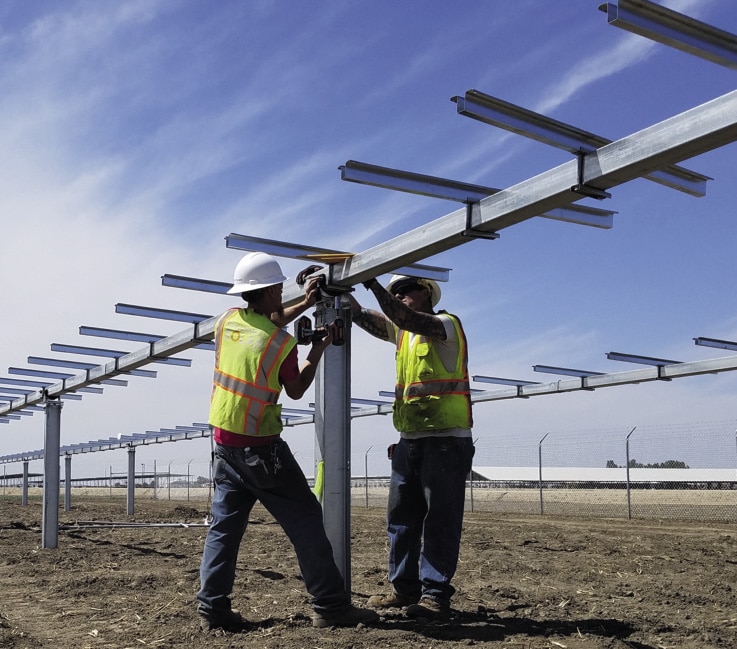From pv magazine 12/2020
The current model of development in solar PV often has an inherent focus on quality over a two-year time horizon. In this model, a developer or short-term owner develops the project and seeks to sell at Provisional Acceptance (PAC) or Final Acceptance (FAC). In the current seller’s market, long-term performance and costs make little difference to the sale price. The project is built by an engineering, procurement, and construction (EPC) supplier, which is focused on meeting a two-year PR figure and under pressure to deliver at the lowest possible cost. In this model, the commercial drivers on both developer and EPC are largely driven by quality over a two-year time horizon. This may, in turn, explain why Everoze sees problems emerge during reviews and transactions of operational projects. And there is no judgment in this – EPCs and developers do a wonderful job – it is just that the game they are playing often “ends” two years after construction.
Due to quantitative easing, super low interest rates and solar as a stable asset class, there is white hot competition for projects in construction and operation. Everoze has seen this firsthand, supporting transactions with multiple bidders, very low prices, and short time scales that challenge effective due diligence. For investors seeking to procure operational projects, this means (1) that their success rate in winning projects is low, making it difficult to meet fund targets, and (2) that returns are being hit in the battle to secure projects. As a result, leading investors are moving upstream, seeking to procure projects in the development phase (pre-construction). Examples of this are Octopus buying a 175 MW development portfolio in Spain, Encavis’ partnership with Solar Century, and many funds buying into developers. This may not seem that important, but it marks a significant change from the current model.
In this emerging model, long-term owners have much greater influence over the design and construction of projects. This means owners can now focus on designing for long-term value, optimized procurement approaches, and better supervision of construction. Let’s review each in turn.
Long-term value
In the current model, the owner takes over a project at PAC or FAC, usually with significant debate over performance and the punch list. However, at this stage, the project has already been constructed, and so any issues identified are expensive and difficult to change, with design errors often the root cause.
In the emerging model, the owner is involved pre-construction. This means they can now shape the design of the project, at the stage where there is the most influence on project outcomes. We expect this to result in a drive for longer-life projects (30 to 40 years), a greater focus on through-life performance, and, particularly in subsidy-free markets, a focus on flexibility to access alternative revenue streams. Long-term value and returns now become a core part of the design process, with owners increasing their input through prescriptive design or more detailed design reviews.
Procurement options
Longer-term owners can now shape and decide which procurement approach is best for achieving long-term value, with a mix of approaches likely to be seen. For those owners procuring an EPC, then opportunities exist to select the EPC and to specify their own specific Employer’s Requirements (rather than depending on a generic technical specification developed by a developer or EPC). For those owners interested in more control, then multi-contract is an option, with significant freedom to specify preferred components.
Better supervision
A medium-sized utility solar PV project can include millions of parts being put together in an outdoor environment and in time scales that normal construction industries (and other renewable technology projects) would find breathtaking. In the current model, this is managed by an EPC and developer with short-term horizons. The long-term owner then tries to identify any issues through a one-day site visit, all while seeking to win rights to buy the solar PV project in a highly competitive situation.
In the emerging model, the long-term owner can now choose the level of their own site supervision so that they can identify and mitigate any issues before they have been repeated across a site, and can ensure that build quality meets the owner’s requirements. We expect long-term owners will scale up their own construction supervision with a flexible approach between full-time attendance at large projects and periodic inspections at smaller projects.
Natural evolution
In summary, long-term owners buying pre-construction will disrupt the current model, which has increasingly focused on quality over the short term. The new model offers opportunities for owners to design for long-term value, optimize procurement approaches and better supervise construction. In turn, this can lead to significant improvements in long term performance. All of which represents another important step along the path for solar PV as it becomes a high-quality, long-term, cost-competitive infrastructure asset.
About the author
Olivier Crepon is the managing director of Skyray, a new subsidiary of Everoze that provides design and engineering services for large-scale solar arrays, as well as new-build solar+storage. He has 20 years of experience at engineering service companies in the energy and environment sectors. For more details on Skyray, visit www.skyrayengineering.com.
This content is protected by copyright and may not be reused. If you want to cooperate with us and would like to reuse some of our content, please contact: editors@pv-magazine.com.








The need for good quality in Engineering, Procurement and Construction for solar PV projects is highly essential and a Must for the ultimate good of the developer, O&M contractor and the country on long term basis. The rat race by some of the developers for accepting tenders with decreasing tariff by ignoring Quality aspects (some time under compulsion) will kill this objective and result in failure of the solar mission. Entrepreneurs who are investing just for cash benefits on short term basis from solar should be desisted and only solar passionate parties should be permitted with award of orders.